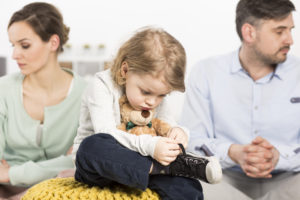Co-Parenting
At one time, you loved your child’s other parent and you most likely worked together in some capacity to tend to your child’s every need. Then, things shifted between you and the other parent and feelings changed. Eventually, a separation and/or divorce happened and through that process, more feelings changed towards the other parent and the process itself was most likely adversarial and negative. Now, you’re left to parent a child with someone that you may not like very much anymore.

Your child’s life changes in profound ways, too. Your child must adjust to many new situations, such as a new place to live (at least with one parent), a reconfiguration of the time spent with both of you, going back and forth from house to house, and a life that basically no longer resembles what he/she had before you and the other parent separated and/or divorced. Oftentimes, the child’s adjustment includes new step-parents, step-siblings, and new babies being born. Quite simply, though, your child just wants to love both you and his/her other parent while not feeling conflicted or disloyal.
When parents say that they “would do anything in the world for their child,” they mean it, but they often act in ways that don’t show it because of the toll a separation and/or divorce takes on parents. Effective post-divorce and post-separation parenting requires a new family model so that parents can act in ways that show the child that they “would do anything in the world for their child.”
Resetting the Family’s Swerve 101 and Swerve 201 parenting educational programs were developed to help you “do anything in the world for your child” by learning what happens to your child’s growth and development when parents have chronic conflict, as well as more effective parenting tools that you need in order foster your child’s psychological, emotional, brain, and physical development.
